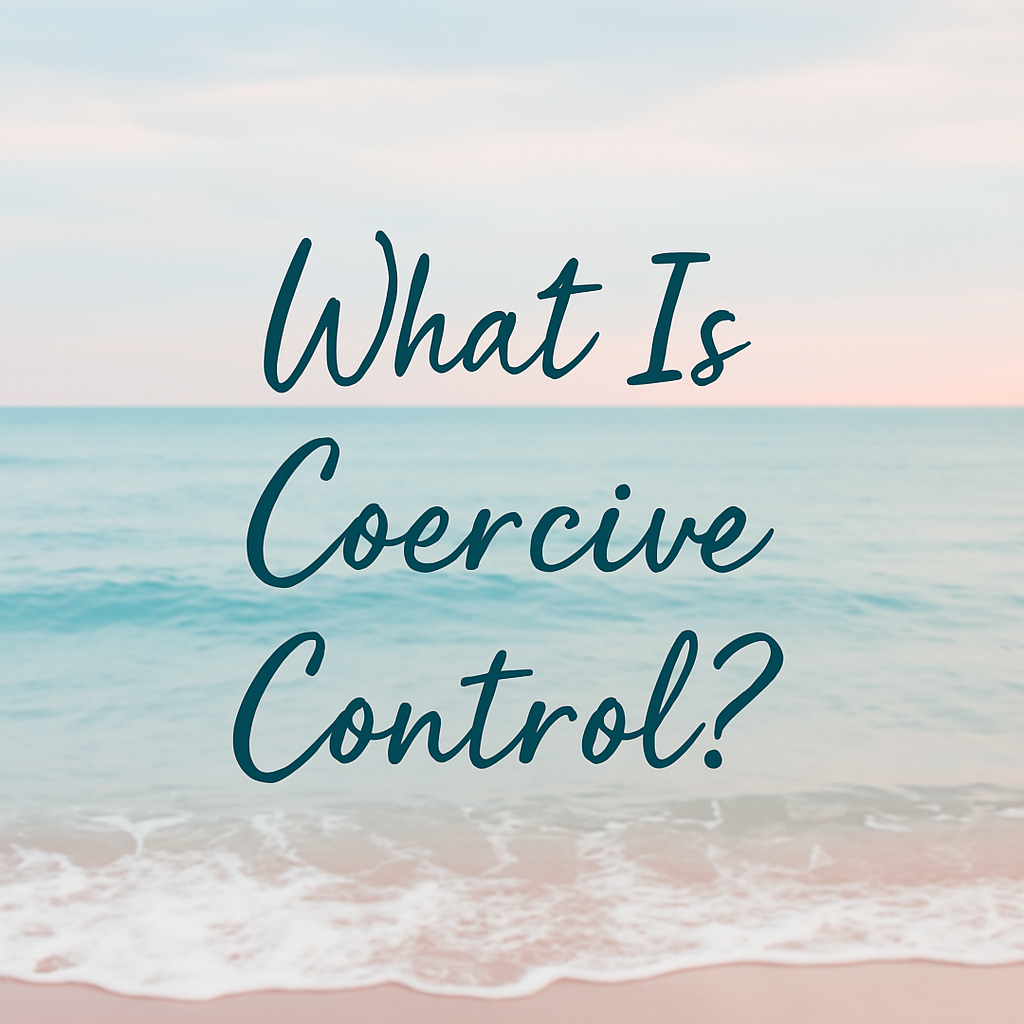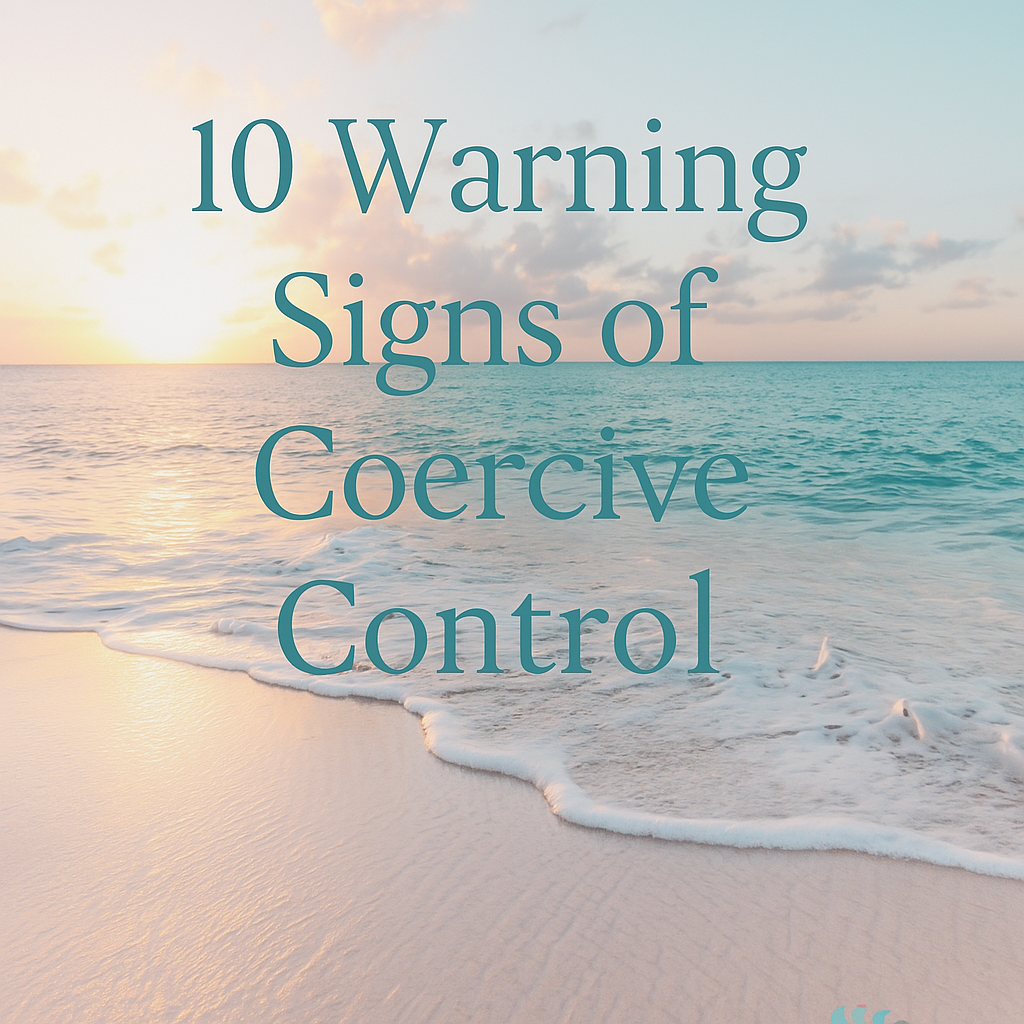They looked like the Insta-perfect couple, young, beautiful, living the dream life on the road. But behind the filtered photos and carefully edited videos, something much darker was happening. And for so many of us who have lived through abuse, it was all too familiar.
Coercive control in relationships is something many people don’t see—until it’s too late. Gabby Petito’s story broke my heart in a way I can’t fully explain. From the first headline, I felt this gut-deep knowing. The way Brian Laundrie looked at her. The way she tried so hard to explain things away. The way the bodycam footage showed her in tears, blaming herself, while he stood calm and composed. I’ve seen it before. I’ve lived it.
That’s why when I watched the Netflix documentary American Murder: Gabby Petito, it didn’t feel like a true crime story. It felt like a warning. A confirmation. A painful reminder that coercive control doesn’t always leave bruises, but it can still kill.

What Is Coercive Control?
Understanding coercive control in relationships means looking beyond just physical violence. It’s the pattern that traps victims emotionally, mentally, and sometimes physically.
Coercive control is a pattern of manipulation, threats, humiliation, isolation, and intimidation that builds over time. It’s subtle at first. Easy to miss. It’s even easier to explain away. But eventually, it becomes a prison. One where you start to doubt your own mind, your memories, your worth.
As Dr. Lisa Fontes, author of Invisible Chains, explains, psychological abuse might happen occasionally, but coercive control is a multifaceted, all-encompassing system of domination. It includes things like monitoring, sexual coercion, controlling finances, and cutting someone off from their support system. Sometimes there’s physical violence, but not always. And that’s what makes it so hard to spot.
My Personal Experience with Coercive Control
As a divorce coach who works with abuse survivors daily, I see this dynamic play out again and again. And I saw it in my own marriage, too.
My ex didn’t start with threats. He started with love bombing. He made me feel like I was the only person in the world who truly mattered. And then, little by little, the rules crept in. What I could wear. Who I could talk to. Whether I could work, he told me it was all for our marriage. That he just wanted what was best for me. That I didn’t need anyone else because he was everything I needed.
I remember one shortly after our youngest daughter was born, I wanted to attend a friend’s wedding. He told me it was a bad time and that we needed to prioritize “our new family.” I canceled. Over time, it became easier to stop asking. Eventually, I didn’t even reach out to friends anymore.
By the time I realized I was isolated, emotionally drained, and afraid to speak my truth, I no longer recognized myself. I used to be outgoing, thoughtful, full of energy. But during those years, I was constantly tired, walking on eggshells and questioning everything I did.
Recognizing coercive control in relationships means knowing the red flags before they escalate. These patterns often start subtly and grow over time.
10 Warning Signs of Coercive Control in Relationships

Want a printable version of these warning signs?
This free PDF is designed to be survivor-safe, shareable, and something you can keep or pass along when the time is right. Enter your name and email below, and I’ll send it straight to your inbox.
1. The Courtship Feels Like a Fairytale
Coercive control often begins with intense, overwhelming affection, what we call love bombing. They’ll say you’re soulmates, that it was fate. They move fast, often pushing for commitment quickly. It feels romantic, but it’s a strategy to gain rapid emotional control. I remember hearing, “We were meant to be,” over and over. I mistook obsession for love. If you’re a friend or family member witnessing a whirlwind romance, especially when someone seems to change or pull away from others, take a closer look.
2. Their Actions Don’t Match Their Words
Abusers are often master manipulators. They say all the right things, especially around others. But actions matter more. My ex told me I could go back to school. He said he believed in me and wanted that for me. But somehow, it never happened. We didn’t have the money. The kids were too young. He was too busy with work. The door was always cracked open just enough for hope, but never wide enough for action. That’s not support, it’s control dressed up as care.
3. The Relationship Looks Perfect on Social Media
Social media only shows what people want you to see. Victims often post happy photos because they’re trying to convince themselves everything is okay, or because it’s safer than telling the truth. I used to smile in photos even after being belittled minutes before. Gabby’s Instagram looked like a dream, and that’s what made it even more heartbreaking. If someone’s posts seem overly perfect, or if their real-life energy doesn’t match the online vibe, trust your gut.
4. Friends or Family Sense Something Is Off
Trust those instincts. Gabby’s friend said something felt off. I’ve heard this from clients, too— “My mom didn’t like him, but I brushed it off.” If you’re a friend or parent who senses something’s not right, don’t ignore it. And if you’re the person in the relationship and people you love are expressing concern, take a pause. The people who truly love you don’t say things to be mean, they say them to protect you.
5. They Slowly Isolate You from Others
The more isolated a person becomes, the more power the abuser has. They may criticize your family, discourage your hobbies, or make you feel guilty for spending time away from them. My ex moved us across the country for his career. He called it a fresh start. But when a few opportunities came up to move back closer to my family, he never considered it. Every reason sounded logical, but the message was clear: we were never going back.
6. They Always Play the Victim
In public, they seem calm and reasonable. In private, they twist every argument to make it your fault. I was told I was “overreacting” constantly. Even when I had legitimate concerns, he’d flip it and make me feel like I was the one causing drama. In Gabby’s case, the police even labeled her the aggressor. This tactic is so common, and it keeps victims confused, exhausted, and silent.
7. You Start to Blame Yourself
One of the most painful parts of coercive control is how it chips away at your confidence until you start thinking everything is your fault. Gabby apologized over and over in that police video. I used to do the same, saying sorry just to avoid conflict, even when I hadn’t done anything wrong. If someone you love is constantly apologizing, minimizing their experiences, or walking on eggshells, that’s not just anxiety, it may be trauma.
8. The System Doesn’t Always Recognize It
Too many survivors are dismissed because their abuse isn’t visible. The law tends to focus on violent incidents, not patterns of control. I’ve seen this in family court. I’ve watched as strong, brave women were made to look unstable because they dared to speak the truth. We need better education for law enforcement, judges, and court professionals so they can recognize coercive control for what it is.
9. The Relationship Follows a Pattern of Abuse
Coercive control isn’t random, it follows a pattern. You might hear about love bombing, devaluation, discard, and hoovering. I didn’t know those terms then, but I lived them. It started with the overwhelming affection. Then came the put-downs. Then, the distance. And just when I was ready to leave, he’d reel me back in with charm and promises. If this back-and-forth feels familiar, you’re not alone. It’s not your fault.
10. Others Defend the Abuser
Gabby’s story showed how even the abuser’s family can deny and enable. In my case, there were people who made excuses, who told me I was too sensitive, or who didn’t want to get involved. It’s painful but common. Survivors need support systems that believe them, stand with them, and help them rebuild.
If You’re Starting to Wonder…
You don’t need someone else to label it for you. If something feels off, if your relationship leaves you anxious, small, or unsure of yourself, that matters. You don’t need a bruise to justify your gut feeling.
So many survivors start by just questioning. That’s what I did. I didn’t know what it was, but I knew something wasn’t right. And that wondering, that whisper in your chest, that’s where it begins.
If you’re in that space, here’s what I want you to know:
- You’re not overreacting.
- You’re not imagining it.
- You’re allowed to trust yourself, even if no one else understands yet.
You don’t need to have it all figured out. You can take small steps. Save a screenshot. Talk to someone safe. Start writing things down.
Whatever you do next, do it with this truth: You matter. Your voice matters. Your safety matters.
Realizing you’re experiencing coercive control in relationships can be overwhelming—but it’s also the beginning of taking your power back.

If You Recognize These Signs, You’re Not Alone
Gabby knew something was wrong. She even told someone she was thinking about leaving. And like so many victims, she didn’t know how. Because leaving is never simple when you’ve been conditioned to believe it’s all your fault.
If I could go back and tell myself anything, it would be this: you are not crazy, you are not too sensitive, and this is not your fault.
As a survivor and now as a coach, I want to say this loud and clear: If you see yourself in any of this, you’re not alone. You’re not imagining things. You’re not too sensitive. And you don’t have to wait for things to get worse before asking for help.
Here’s what I’ve learned:
- If something feels off, it probably is.
- If you’re constantly explaining your partner’s behavior to others or to yourself, it’s worth taking a closer look.
- Real love doesn’t demand that you disappear.
Gabby’s story is a tragedy that should never have happened, but if her voice can help others wake up to the warning signs, maybe it can save lives. Maybe it already has.
Even if you’re still unsure how to label what you went through, learning more about coercive control in relationships can bring clarity, comfort, and direction.
Journal Prompt: Reflecting on Your Relationship
Want to reflect? Here’s a gentle journal prompt: When was the last time I felt truly safe, seen, and supported in my relationship?
Learning to recognize coercive control in relationships is the first step toward healing, and the more we talk about it, the more we help others recognize it, too.
Get Support and Learn More
Frequently Asked Questions
What is coercive control in relationships?
Coercive control is a pattern of emotional, psychological, and sometimes physical abuse. It’s used to isolate, dominate, and break down a person’s sense of self—often without ever leaving a visible mark.
How is coercive control different from other types of abuse?
It often shows up in subtle ways: controlling where you go, who you talk to, or what you wear. It’s rooted in manipulation, guilt, fear, and isolation—not just violence.
What are some early red flags?
Moving too fast, love bombing, isolating you from loved ones, making you feel guilty for setting boundaries, or constantly flipping the blame.
I’m not sure if this applies to me. What should I do?
If you’ve read this far and something feels familiar, that’s enough to take it seriously. Trust your gut. You don’t need to have it all figured out to start exploring what you need.
Where can I get help or learn more?
You can call the National Domestic Violence Hotline at 1-800-799-SAFE (7233), visit www.thehotline.org, or explore survivor-focused resources like www.myhiddenscars.com.
Want to connect or learn more? Visit www.MyHiddenScars.com or find me on Instagram @myhiddenscarscoach. You can also join my free support group on Facebook here.
Coercive control in relationships can be subtle and hard to recognize, but its impact is real and lasting. If you’ve made it this far, thank you. I know how hard it is to read something that hits close to home.
Healing from coercive control in relationships isn’t always linear, but every step you take away from silence and confusion is a step toward yourself.
Healing from coercive control in relationships isn’t always linear—but every step you take away from silence and confusion is a step toward yourself.
Final Thoughts
If you’ve made it this far, thank you. I know how hard it is to read something that hits close to home. Whether you’re in it right now, just starting to see the patterns, or years out and still healing—I want you to know this:
You are not broken.
You are not crazy.
You are not alone.
You don’t need anyone else to understand or agree for your story to be valid.
You don’t need to justify the decisions you made to survive.
And if you’re wondering whether what you went through was really abuse, there’s your answer. Healthy relationships don’t leave you feeling like this. Confused. Small. Like you’ve lost yourself.
Your story doesn’t end in the dark. There is life after abuse. There is healing. There is strength waiting for you, and it’s already inside you.
I’m living proof of that. And if you ever need someone to walk with you, I’m here.
Before you go, if you’re supporting someone who might be experiencing coercive control in relationships, or you’re still trying to understand your own story, you’re not alone—and there are resources to help.
If you’re building awareness around coercive control in relationships, this blog post and free resource are here to support that work.
About the Author
Tiffany Colburn is a certified divorce coach, domestic abuse survivor, and founder of MyHiddenScars.com. She supports women navigating emotional, verbal, and coercive control in relationships, through one-on-one coaching, survivor-centered resources, and speaking engagements. Tiffany specializes in helping clients rebuild confidence, document abuse, and advocate for themselves in court and custody battles.





